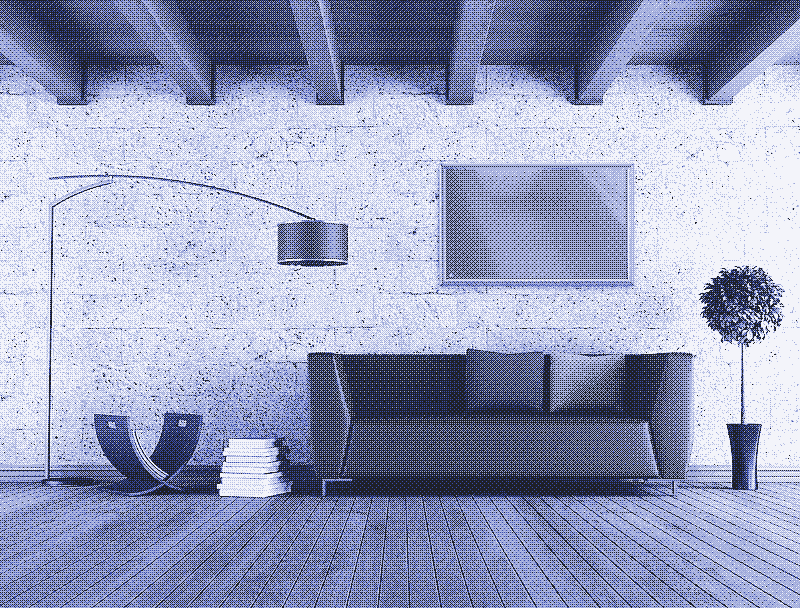
Most modern heating systems are primarily based on the heating of air. The old way of warming was based upon radiation and conduction, which have the potential to be more energy-efficient than convection.
While convection implies the warming of each cubic centimetre of air in a space in order to keep people comfortable, radiation and conduction can directly transfer heat to people, making energy use independent of the size of a room or building.
However, restoring the old way of warming would not make sense without new technology. Most heating systems from the old days were inefficient, polluting, dangerous and impractical. Today, we have better options available, which can be combined in interesting ways.
As we have seen in the previous article, heat can be transferred through convection (warming the air), conduction (direct physical contact) and radiation (electromagnetic energy). Most modern heating systems heat by convection, but it’s important to note that conductive and radiant heat sources also heat the air.
This is especially relevant for radiant heating sources. A 100% radiant heater doesn’t exist. The sun produces 100% radiation, but it sits in a vacuum. On earth, the surface of a heating system will always make contact with air, which is warmed by conduction and rises. Therefore, a radiant heating device is defined as a heating device in which the share of radiant heat in the total heat transfer is equal to or larger than 50%.
Tile Stoves or Masonry Heaters
There’s one heating system from earlier times that’s still very much recommendable: the tile stove or masonry heater. In fact, there exists no modern heating device that can match the comfort and energy efficiency of a tile stove with integrated bench seat or sleeping platform, an appliance that combines heat transfer by radiation and conduction. A tile stove provides a central place of comfort and coziness that modern air heating systems no longer offer us.
A tile stove or masonry heater is also the most efficient and least polluting way to heat with wood. It achieves this by a high thermal mass, which allows wood combustion at very high temperatures without overheating the room. Because of their high combustion efficiency (close to 100%), and high heating efficiency (up to 90%), tile stoves use much less wood and produce much less air pollution than a common wood stove or a fireplace. 123
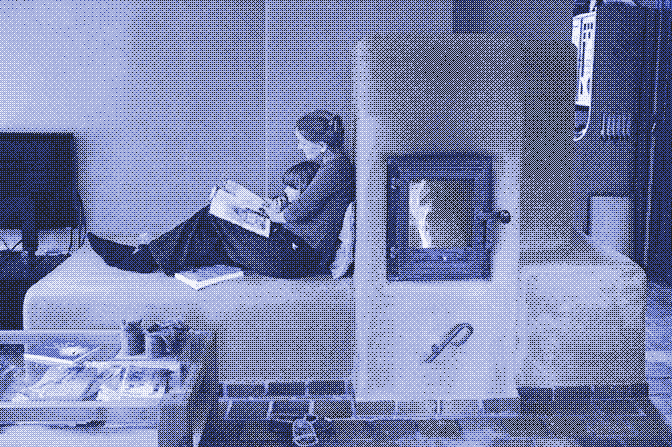
Furthermore, they have to be fired only once or twice a day and keep radiating heat for about 12 to 24 hours, greatly reducing the work required to heat a building by wood. In contrast, a wood stove or a fireplace demand constant attention. Lastly, because it burns wood cleanly, and because most of the heat is given off to the masonry structure, a chimney fire is almost impossible.
The tile stoves of today are not comparable to those of yesteryear. Great improvements were made in the eighteenth century, resulting in a more efficient heating device—the Swedish “kakelugn”. The design was further improved in the 1970s by the Finnish, and the technology keeps evolving. These days, masonry heaters can be built by craftsmen, or put together from premanufactured parts. The second option is much cheaper, but it limits you to the available forms and sizes. When a tile stove is built by a craftsman, any form is possible.
The Drawbacks of Tile Stoves
The superior comfort and efficiency of the tile stove is not for everybody, though. First of all, they are by far the largest and heaviest heating systems around. Consequently, ample space and a sturdy floor should be available. Logically, a tile stove or masonry heater also requires a chimney. Furthermore, although tile stoves made from modular parts can be moved, those built by craftsmen are forever attached to the house they where built in, so they’re not such an attractive option for tenants.
Another disadvantage of a tile stove is that it can’t provide heat quickly. The high thermal mass of the structure delays the heat transfer to the room. This is not a problem for spaces which are frequently used, because thermal comfort can be maintained by firing the stove once or twice per day, depending on the weather conditions. However, if there’s nobody around to fire the stove at least once a day, people arrive in a cold house with a heating appliance that will work on full capacity only many hours later. The convenience of our modern lifestyle might make us see this as a bigger problem than we would have 150 years ago.
The high thermal mass of a tile stove makes it best suited for frequently used rooms and for persistently cold weather
Because of its slow responsiveness, a tile stove or masonry heater is also better suited for persistently cold weather than for a rapidly fluctuating climate. If you have burnt too much wood in the morning, there’s no way to lower the heat production of the tile stove in the afternoon; for instance, when the sun unexpectedly breaks through the clouds and quickly warms up the house.
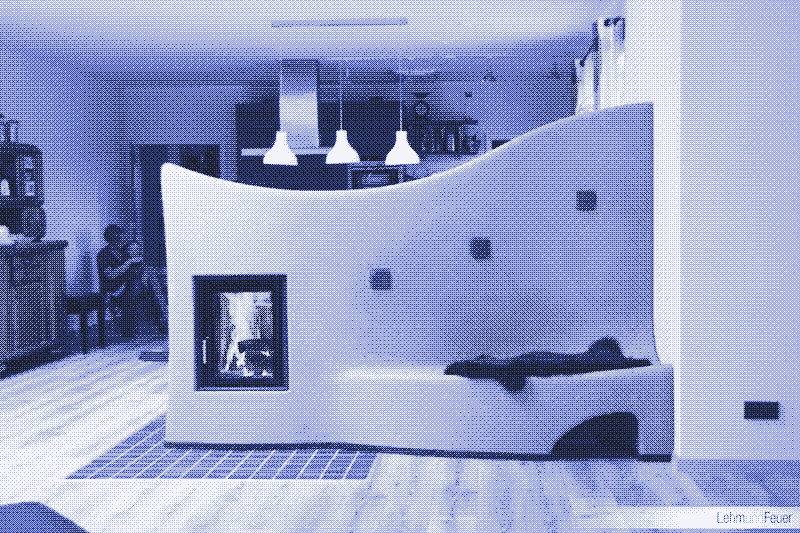
Likewise, if you have burnt insufficient wood, there’s no way to raise heat production in case the outside temperature drops unexpectedly. You always have to wait for the next fire cycle to adapt the heat output of the stove, which means you have to guess what the weather is going to be like in the next 12 to 24 hours.
Finally, like any other radiant heating source, a tile stove only provides warmth in the space that it’s built in, not in other rooms. To counter this issue, tile stoves can be constructed in each room, and large tile stoves can be built through floors or walls to distribute warmth throughout a building. However, since it concerns a large and heavy heating device, these plans would require lots of money, time, and a very sturdy building. The tile stove is thus better suited for large spaces than for buildings with many smaller rooms.
Rocket Mass Heaters
Many features of the tile stove also apply to the rocket mass heater, its low-tech cousin. The rocket mass heater only appeared in the 1980s, resulting from research into more efficient cooking stoves. It heats more by conduction than by radiation; it uses the benchwork around the heater to guide hot smoke gases towards the chimney. The heater itself—usually a metal barrel—is rather small. Most of the heat of the fire is stored in the masonry mass of the benchwork, from where it’s slowly released.
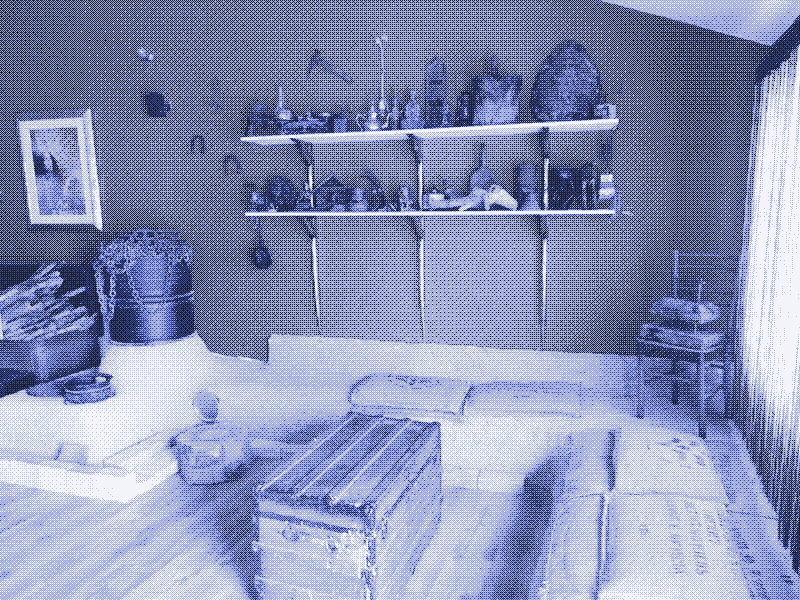
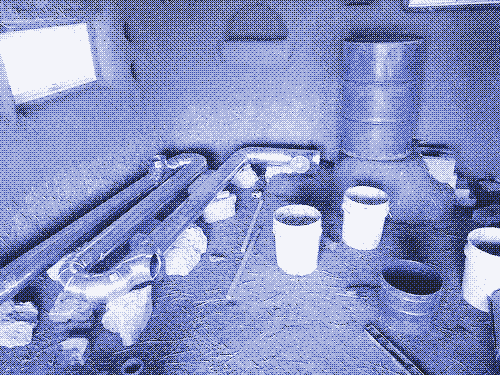
Rocket mass heaters have some important advantages over tile stoves. They are less heavy and bulky, and they are much cheaper and easier to build. On the other hand, they are less efficient, have to be fired more regularly, require more maintenance than tile stoves, and they are just as slow to respond. This makes them best suited for frequently used spaces and in persistently cold climates. Rocket mass heaters also require long, straight wood.
Despite these drawbacks, a rocket mass heater is still a much more efficient and comfortable choice than a common wood stove. If conditions are right and you can’t afford a masonry heater, building yourself a rocket mass heater is still a viable option. A warning, though, from the man who invented the device, Ianto Evans: “These stoves have not been in regular use long enough to determine the real risk of chimney fires, so inspect your chimney often.” 4
Thermally Active Building Surfaces
With the arrival of the public water supply in the nineteenth century, a new radiant heating system appeared: building surfaces heated by hot water running through a circuit of metal pipes. While these systems are generally known as radiant or heated floors, we prefer the term “thermally active building surfaces”, as this technology also works in walls and ceilings, and it can not only heat but also cool a building, which is achieved by running cold water through the pipes. 5
The heating of building surfaces, of course, took place long before the nineteenth century. The Romans warmed their bath houses and large villas with hypocausts, central heating systems that distributed the heat from an underground fire through flues in floors and (sometimes) walls. However, because of its high energy density, water is a better medium for heat transfer than smoke. The water pipes can be much smaller than the flue pipes, and the fire risk is greatly reduced. Nowadays, both copper pipes and polyethylene (“PEX”) tubes can be used to distribute hot (and cold) water.
Unlike tile stoves, thermally active building surfaces distribute warmth evenly throughout a space.
Like tile stoves, thermally active building surfaces have a high thermal mass, which means that they can’t give off heat quickly. Because of this, they are best suited for frequently used spaces and steady, cold temperatures. Unlike tile stoves, however, they distribute their warmth evenly throughout a space, which means they’re not suited to localised heating. With a thermally active building surface, the whole room will be comfortable, regardless of how many people are inside and how much space is being occupied.
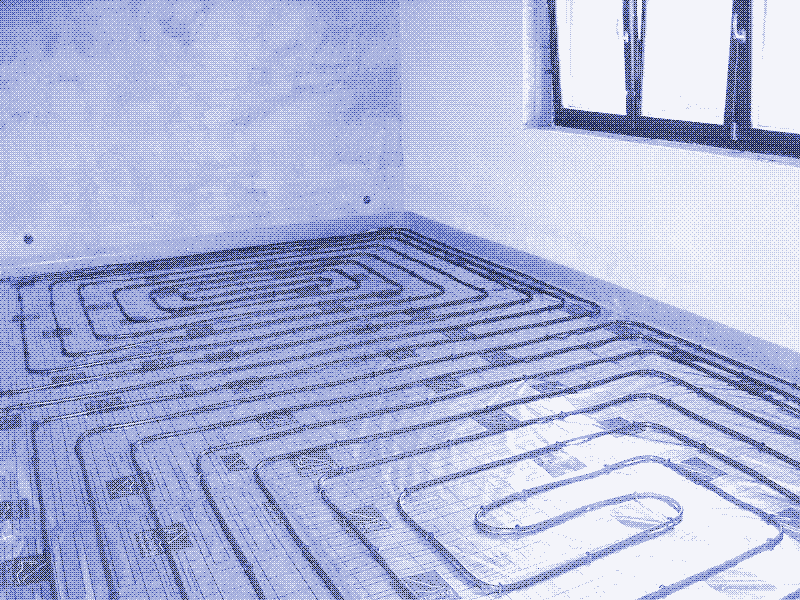
The main advantage of thermally active building surfaces is that they eliminate radiant temperature assymetry: there are no large differences in temperature throughout the space. There’s no need for local insulation (hooded chairs, folding screens—see the previous article) to provide thermal comfort. On the downside, when compared with air heating systems energy savings are usually rather small, unless the water is heated by a solar collector or a heat pump.
Because of the large heating surface, water temperatures can be relatively low, usually less than 30ºC (86ºF). Heat pumps and solar collectors are very efficient in delivering these low temperatures. The water for a heated building surface can also be warmed by a tile stove (provided it has enough heating capacity), which is yet another way to distribute the heat from a tile stove throughout a building.
Interestingly, thermally active building surfaces don’t really heat us through radiation. Because the temperature of the heating surface is usually lower than our skin temperature, it is in fact us who are heating the building surfaces by radiation. However, heated building surfaces limit the radiant heat loss from our body to the environment, providing thermal comfort in another way. They also produce a significant share of convection (especially for floor heating), while heated floors and walls can provide warmth through conduction.

The main disadvantage of heated building surfaces is that they require radical building renovation, because the floor, the wall or the ceiling has to be broken away and built up again. Furthermore, thermal insulation is a necessity for outer walls or a great deal of heat will be lost to the outside.
Thermally active building surfaces are almost a logical choice for new buildings, at least for frequently used spaces and especially in climates that also need cooling during the summer months. However, if we are looking for solutions to decrease energy use in the buildings that we already have, and to save energy in temporarily heated spaces, we should look for other options.
Infrared Heating Panels
The most recent radiant heating systems are infrared panels, which can be operated by electricity or hot water. They can be useful both as an alternative or as a complement to a tile stove or a heated building surface. Hydronic (water-based) radiant heating panels came on the market some 50 years ago, while electric radiant heating panels date from the late 1990s. Both technologies have evolved a lot in recent years. 67
Radiant heating panels have little or no thermal mass and can produce heat very quickly
Like tile stoves, radiant panels heat locally, creating warmer micro-climates within a cooler space. However, because infrared heating panels have a thin metal heating surface with little or no thermal mass, they can produce heat quickly. This makes them interesting options for use in less frequently used spaces and in more changeable climates, situations in which tile stoves, rocket mass heaters, and thermally active building surfaces are less beneficial. Because radiant heating panels can provide warmth quickly, a room need only be heated when somebody enters it.
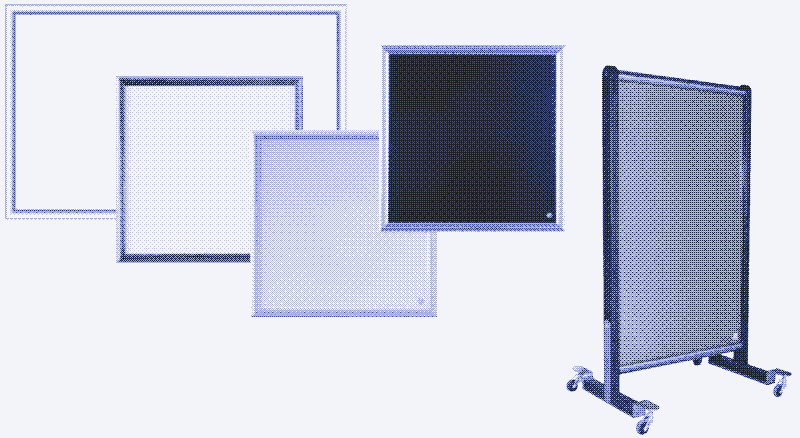
Radiant heating panels have more advantages over older systems. For example, they are as light and compact as a tile stove is heavy and bulky, and, unlike heated building surfaces, they are easy to install in an existing building. Radiant panels can be mounted on the walls or the ceiling, they can be free-hanging, or recessed into a suspended ceiling system.
This makes it practical to use them in multiple rooms, and it also makes them suitable for tenants, who can take their heating system with them when they move to another place. On the downside, the heating surface of a radiant panel cannot be touched safely because burns would occur immediately. This means that heat transfer through conduction is impossible.
Hydronic or Electric?
In hydronic panels, heated water flows through plastic or copper tubes attached to a metal plate, which then radiates the heat into the space. Electric panels look very similar, but the heat is produced by electric resistance. Like water-based thermally active building surfaces, hydronic radiant panels can also cool a building, something that electric radiant heating panels can’t do. On the other hand, electric panels are easier to install and even more responsive than hydronic panels—it takes less than 5 minutes before an electric panel radiates heat at full power. 6
Hydronic radiant heating panels should not be confused with the so-called “radiators” that are common in many European buildings. While these are hydronic heating systems too, their design is aimed at producing the largest share of convection possible (which is why they should actually be called “convectors”). The radiant metal surfaces of a “radiator” are facing each other, so that most of the heating surface can’t radiate energy to people directly.
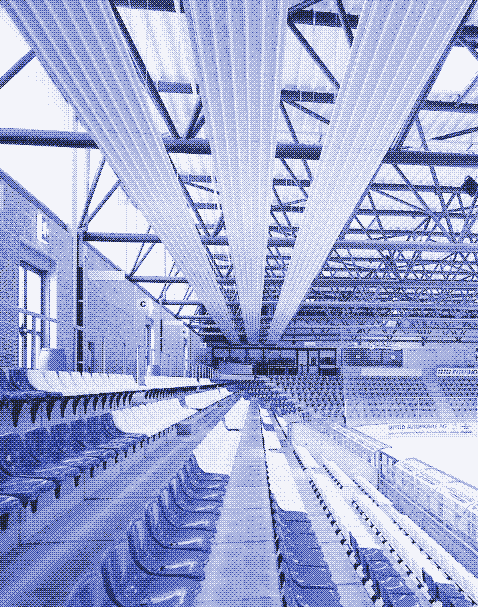
Instead, they radiate energy to each other, heating the air in between the panels through conduction, which then rises and heats a space by convection. Another difference is that “radiators” have lower surface temperatures than infrared panels. As a consequence, the share of radiant heat in the total heat transfer is only 20-30%. The same goes for electric “radiators”. 8
Concerning electric radiant heating panels, it’s important to note that we are talking about electric longwave infrared heaters. These are not to be confused with the older—and much better known—electric infrared heaters, which produce a glowing red light when in operation. Longwave radiant heaters produce no visible light (they are “dark radiators”) and have much lower surface temperatures. Both technologies have a different effect on health, which we will discuss at the end of this article.
Electric longwave infrared heaters are not to be confused with the older and much better known electric shortwave infrared heaters, which produce a glowing red light when in operation
Infrared heating panels are the perfect addition to a high mass radiant heating system. For instance, an infrared heating panel can heat up (part of) a room quickly while the tile stove comes to speed, which solves the comfort problem for people who keep irregular schedules. Likewise, the combination of a “fast” and a “slow” radiant heating source offers more possibilities when dealing with changeable weather conditions. Different radiant heating sources can also complement each other in different rooms of the same building. For instance, a tile stove in the living room can be combined with radiant heating panels in less frequently used bedrooms and bathrooms.
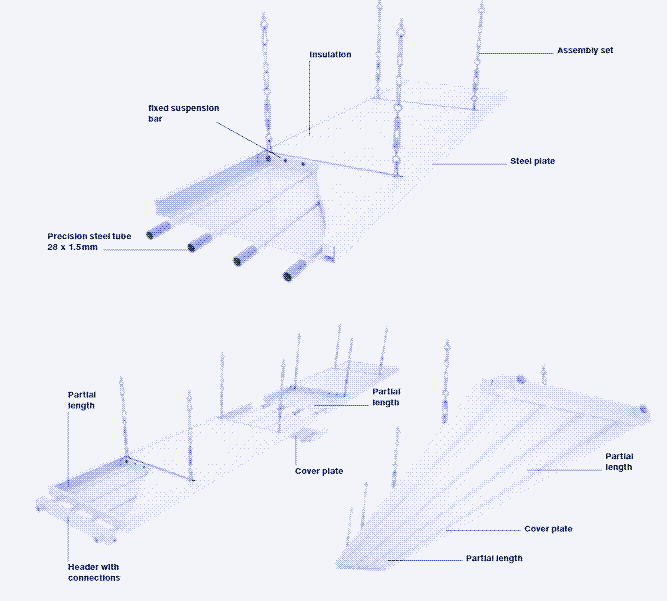
However, it’s important to keep in mind that radiant heating panels lose part of their efficiency advantage over high mass radiant systems when they are used continuously in frequently occupied rooms. This is especially true for electric radiant panels, which experience large energy conversion losses in the power plant. Electric radiant heating panels might also lose their efficiency advantage over air heating systems if they are used to heat a whole space instead of creating micro-climates (see the next article).
Hybrid Heating Systems
Some radiant heating technologies blur the lines between the systems we have discussed. For example, some electric and hydronic radiant heating panels have a high thermal mass of natural stone, which basically turns them into an electric or hydronic masonry heater. The high thermal mass lowers the surface temperature, so these heating elements can also provide heat transfer through conduction when we lean against them.
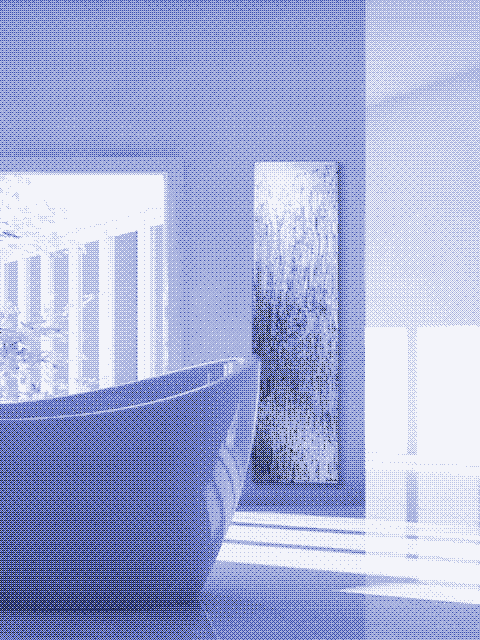
Conversely, some electric and hydronic heating systems create thermally active building surfaces with little or no thermal mass, using mats (electricity) or interconnected prefabricated lightweight panels (water) that can be attached to a building surface. These systems can be just as responsive as radiant panels, but they distribute warmth throughout a space rather than locally. They are also easier to install than high thermal mass systems.
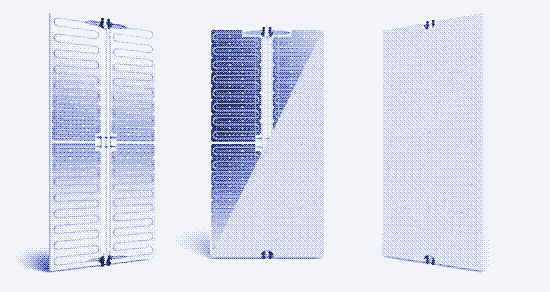
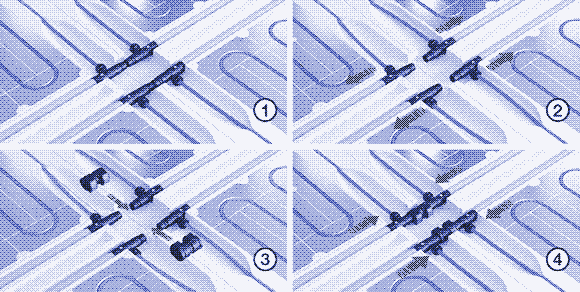
Vertical or Horizontal Radiant Heat?
As was noted at the beginning of the article, every radiant heating source also warms the air. However, the share of radiation in the total heat transfer of a radiant heat source can vary between 50 and 95%, mainly depending on the orientation of the radiant heating surface. Downward facing radiant heating surfaces reach the highest share of radiation (up to 95%), while sidewards facing radiant heating surfaces obtain 60-70% radiant heat transfer. Heat surfaces that are facing upwards only reach 50-60% radiant heat transfer share. 69
The large influence of surface orientation has everything to do with the natural, upward movement of hot air. Because downward convection doesn’t exist—warm air always rises—a downward facing radiant heat surface produces almost no heating of the air. As a consequence, ceiling-mounted radiant heating surfaces are the most energy efficient: to produce a similar amount of radiation as a downward facing radiant heating panel of 250 watts, a sidewards oriented panel requires 325 watts and an upward-facing panel 350 watts. 6
While a ceiling-mounted panel maximizes radiant heat production, a vertically positioned panel maximizes radiant heat reception
However, the high share of radiant heat for downward facing heating panels doesn’t mean that the ceiling is by definition the most appropriate place for a radiant heat source. Humans find themselves mostly in a vertical position during waking hours, either standing up or sitting down. So while a ceiling-mounted panel maximizes radiant heat production, a vertically positioned panel maximizes radiant heat reception. 10
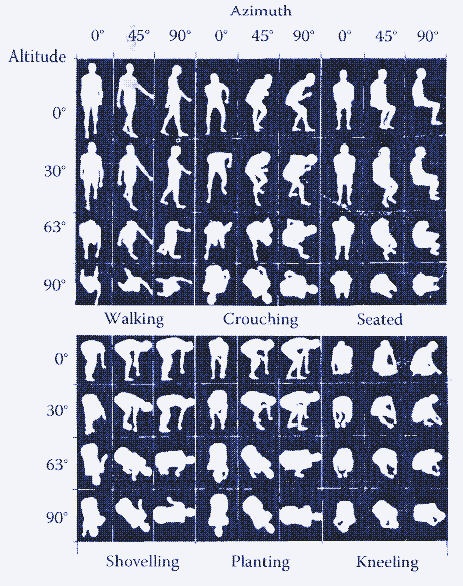
A larger part of the body will be irradiated directly when the heating surface is vertical—see the illustration above. If the heating surface is aimed upwards or downwards, most radiant heat will pass along the body, limiting the direct heating effect. A ceiling-mounted panel only maximizes radiant heat reception when we are lying down—but then we are mostly sleeping and under the covers.
Another reason to opt for a vertically oriented radiant heating surface is radiant temperature assymetry. In the previous article we have seen that the human body can experience large differences in temperature when it’s warmed by a local radiant heating source. A person sitting in front of an open fire will receive sufficient radiant heat on one side of their body, while the other side loses heat to the cold air and surfaces at the opposite half of the room. However, the sensitivity for radiant temperature assymetry is heavily influenced by the orientation of the heating source.
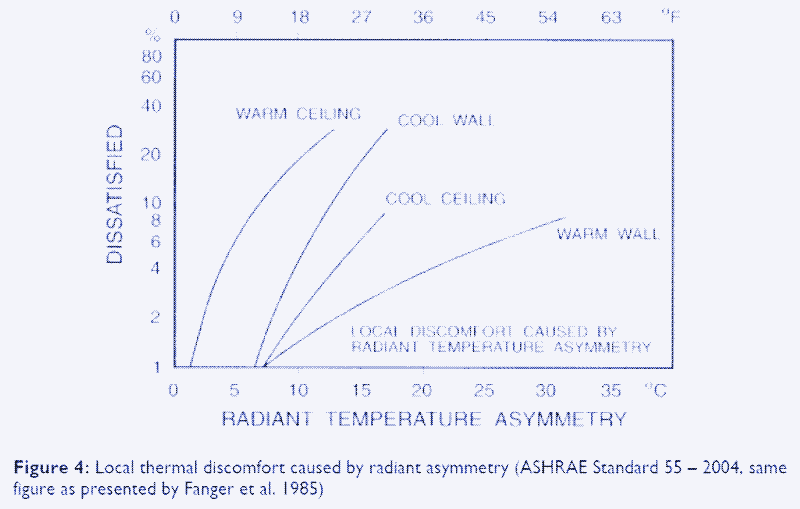
Humans are least sensitive to the radiant temperature assymetry caused by a warm, vertical surface such as a tile stove or a wall-mounted infrared heating panel. The difference in radiant temperature can reach up to 35ºC (63ºF) before 1 in 10 people will complain about thermal discomfort. However, in the case of a warm downward-facing radiant heat source, complaints have been noted at a temperature difference of only 4-7º C (7-13ºF). When the temperature difference amounts to 15ºC (27ºF), 50% of subjects report thermal discomfort. This is because the head is the body part that is most sensitive to heat. 101112
The sensitivity to a hot surface above our heads is not a problem when the whole ceiling is converted into a radiant heating source, as is the case with a thermally active ceiling. Because of the large heating surface, the radiant temperature of such a system can be very low, often below skin temperature. However, the much higher temperatures of electric or hydronic radiant heating panels could make temperature assymetry problematic for some people.
Are Radiant Heating Systems Safe?
There’s an important difference between the radiation originating from the sun, and the radiation that’s produced by the radiant heating systems discussed here. The sun is much hotter, and it’s the temperature of an object that determines which wavelengths of the electromagnetic spectrum dominate: the higher the temperature, the higher the share of shortwave radiation. Because the sun has a very high surface temperature, solar radiation also produces significant amounts of harmful ultraviolet and shortwave infrared waves, which is why we are advised against spending too much time in the sun. 10
Longwave infrared radiation doesn’t penetrate the skin and is harmless. However, excessive use of shortwave infrared heaters or conductive heating systems could lead to a skin condition called Erythema ab igne.
However, if the surface temperature remains below 100ºC (212ºF), as is the case with all the radiant heating systems we have discussed, longwave infrared dominates the heat transfer. Longwave infrared radiation doesn’t penetrate the skin and is harmless, which is fortunate considering our bodies constantly exchange longwave infrared radiation with other bodies around us. 1314
Fireplaces, wood stoves, and shortwave radiant space heaters are another matter, though. While their surface temperature is not as high as that of the sun, it’s much higher than that of tile stoves, infrared panels or heated building surfaces. This means that they also emit shortwave radiation, and can have health consequences. 1314
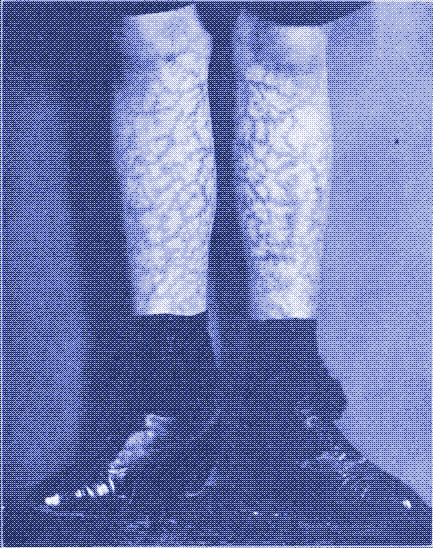
Erythema ab igne, also known as “thermal keratosis” or “toasted skin syndrome”, is a skin condition that’s caused by repeated and prolonged exposure to a heat source, resulting in patches on the skin. It’s a benign dermatitis and the patches usually disappear a few months after the heat exposure ends. However, if the heat exposure continues, the patchwork can become permanent. These cases can eventually develop into skin cancer many years later, although this is rare. The main issue is cosmetic, but the effect is quite spectacular—you might be tricked into thinking that it’s a tattoo.
The condition was first described in the early 1900s, but it must have existed before this. In a 1920 medical handbook it’s described as “a rare disease of the anterior surface of the legs, leading to permanent pigmentation and found in senile, weak or alcoholic individuals exposed to intense heat (firemen, stokers)”. 15 Recent papers about the condition say that it was “fairly common in the elderly who stood or sat closely to open fires or wood stoves”. The condition would typically present on the anterior shins and interior thighs because people would warm themselves right in front of the stove. 1617181920
Are Conductive Heating Systems Safe?
Nowadays, Erythema ab igne caused by a radiant heat source can appear in chefs and bakers (on the arms) and in jewellers, silversmiths and glassblowers (on the face) as an occupational disease. It has also been observed on the legs of women who cook daily on open fires while seated on the ground. Medical cases caused by sitting too close to a shortwave radiant heat source are still recorded, although nowadays it usually concerns red-glowing shortwave electric space heaters instead of fireplaces or wood stoves. There are no reports of Erythema ab igne being caused by longwave radiant heating sources.
However, modern conductive heating sources seem to present a risk. Electric and hydronic heating elements with lower surface temperatures can also be inserted in desks, tables, chairs or benches, or they can be used as portable heating pads. If you can’t afford a radiant floor, you can opt for a water-heated carpet, for instance. Some of these technologies cross the boundary between furniture and apparel, such as heated bracelets or electrically heated clothes. Recent reports show Erythema ab igne appearing following the use of heating pads, car seat heaters, heating blankets, hot water bottles, and even laptops, hot baths and showers.
All reported cases are due to very frequent use of a heat source. For example, two incidents concern a man that took 5 to 6 hot showers daily, and a girl that took a daily hot bath of 60-90 minutes. 1617 A 16 year old boy developed patches in the neck after sleeping on a heated pillow each night for two months, with the first patches appearing after four weeks. 18 A case was reported of a woman who consistently used her car’s heated seats while driving 2 to 4 hours per day for several years. 19 Most cases have been reported due to the use of hot water bottles to relieve chronic pains. 20
While some of these incidents are obviously the consequence of an excessive use of conductive heating, others are not. For example, the use of a conductive heat source for 2-4 hours per day—like the woman in her car—is not unlikely in a space where conductive heating plays an important role in providing thermal comfort. At the moment, only individual cases have been reported, and we don’t know if Erythema ab igne appears in all people who use conductive heating sources for prolonged times, or just in exceptional cases. Nevertheless, it’s obvious that conductive heating systems can have an effect on the skin, so caution is advised.
In the next article, we investigate the influence of local heating systems on energy use, thermal comfort, and indoor health.
Reactions
To make a comment, please send an e-mail to solar (at) lowtechmagazine (dot) com. Your e-mail address is not used for other purposes, and will be deleted after the comment is published. If you don’t want your real name to be published, sign the e-mail with the name you want to appear.
Reactions
Peter
“Likewise, if you have burnt insufficient wood, there’s no way to raise heat production in case the outside temperature drops unexpectedly.”
There is an exception when you don’t need to adapt the heating to the changes in outside temperature: if the walls of the house have high mass: concrete, (thick) brick, adobe, stone. These walls can store heat for a day with just a few °C temperature drop (and that is also an advantage in summer, allowing to cool the walls with nightly ventilation).
That’s why tile stoves are traditional in adobe houses and fireplaces in wood houses.
François
A radiant floor works also best with a condensing boiler which are most efficient when working at lowest temperatures.
Frido
Electric cars commonly use heated seats and driving wheels as it is much more efficient than heating the cabin, thereby increasing range.
Ryan Kelly
This is really interesting, thanks! Coincidentally I think I started following you on instagram a few weeks ago! I can’t seem to find any info as to the actual measurable difference in heating a space between radiant woodburner and convection woodburner. The former must still produce a vast amount of hot air, and all the hot surfaces will create hot air. We are looking for a wood stove that we can cook on, but most seem to be radiant and we have a large space to heat…
Thanks!